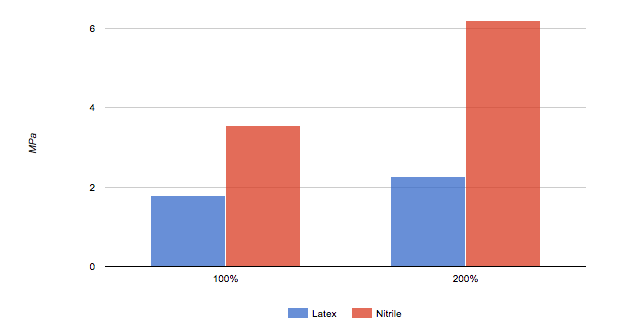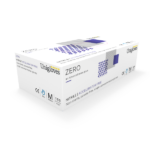Why is modulus important?
Modulus is often cited as the holy grail for manufacturers of rubber products, but what does it mean and why is it as important as it is relevant?
Warning: scientific definition ahead! Modulus, specifically Young's modulus, describes tensile elasticity, or the tendency of an object to deform along an axis when opposing forces are applied along that axis; it is defined as the ratio of tensile stress to tensile strain and is often referred to simply as the elastic modulus.
Huh???
In plain speak, a stiffer material will have a higher modulus while a stretchy material will have a lower modulus, so low modulus materials will be more flexible and comfortable to wear. Natural rubber latex has been the benchmark for elastic materials for decades, easy to stretch, comfortable and returns to its original form quickly and easily. Early versions of synthetic rubbers suffered from being stiff due to their higher modulus formulation and you can still see this today with chemical resistant (non-disposable) gloves. A natural rubber glove of the same thickness as a nitrile glove will be much more flexible, stretches and flexes more easily and is more comfortable to wear. For all the negative press surrounding latex and its potential to cause allergies, it has yet to bettered for comfort and in these days of increasing environmental awareness, has the benefit of quite literally growing on trees.
low modulus materials when worn will cause less hand fatigue during prolonged use and will be more comfortable.
What we are saying is that low modulus materials when worn will cause less hand fatigue during prolonged use and will be more comfortable. So let’s look at some graphs to explain this concept and start by comparing natural rubber latex with a standard nitrile disposable:

How does Unigloves help?
When the sample is stretched by 100% and 200% of its original size, we can see that latex has a significantly lower modulus than nitrile and we now know that means greater comfort in use. However, recent improvements in nitrile technology developed by Unigloves have led to a formulation that is not only accelerator free, but also sulphur free and zinc free and is currently available as our Zero Nitrile glove. Now let’s see how that compares to the same standard nitrile used in the previous graph:

What this tells us is that the Zero Nitrile formulation is easier to stretch than the standard nitrile and will be more comfortable to wear than the standard nitrile.

And what do we conclude from all this? When specifying a glove and material type, along with all the usual considerations that are made, why not also bear in mind that lower modulus gloves will be more comfortable for those wearing them and may help their acceptance of using gloves in the first place.


